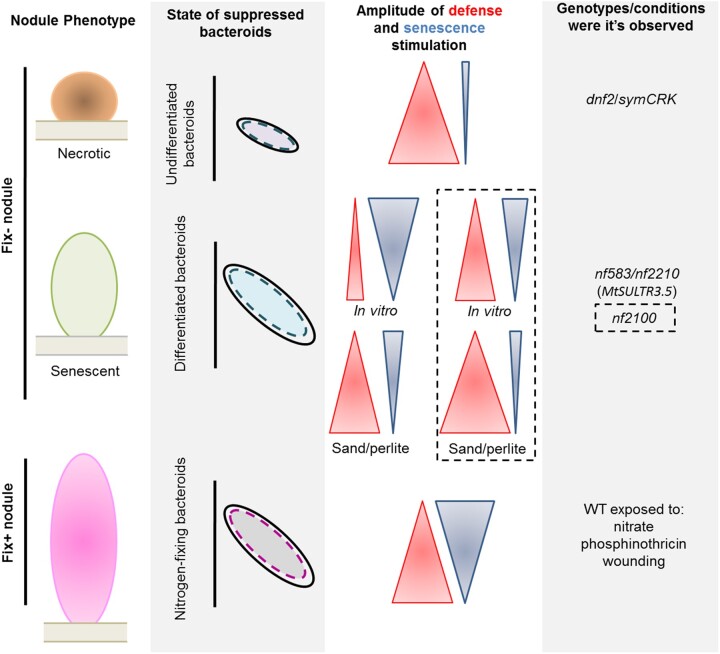Figure 6.
Defense and senescence activation in Medicago nodules. After rhizobia internalization, failure in defense repression can lead to death of undifferentiated bacteroids in dnf2 and symCRK producing non-fixing nitrogen (fix−) nodules showing necrosis and low stimulation of senescence. In contrast, the senescence mutants show degradation of differentiated bacteroids in a fix− senescent nodule associated with senescence marker expression and low defense responses in nf583 and nf2210, two potential mutated alleles of MtSULTR3.5. Interestingly, nf2100 displays more defense stimulation than the other senescence mutants. The environment (as sand/perlite substrate) can stimulate immunity and reduce senescence stimulation in senescence mutants. In the sand/perlite conditions, nf2100 shows PR stimulation similar to that observed in dnf2 and symCRK with the accumulation of necrotic tissues. Finally, in nitrogen-fixing (fix+) nodules, stress conditions (wounding, phosphinothricin) or induction of senescence with the addition of nitrate to the growth medium, lead to a co-activation of defense and senescence and suppression of nitrogen-fixing bacteroids.

